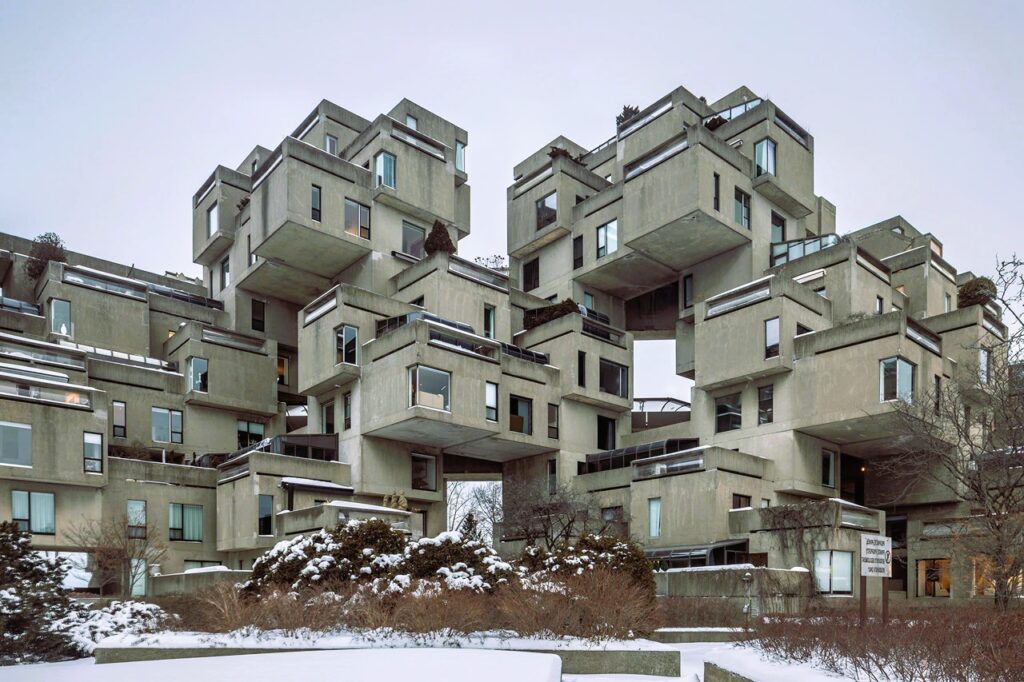Canada’s architectural landscape is a testament to the creative vision and innovation of architects who have left an indelible mark on the nation’s skylines. From iconic landmarks to innovative urban spaces, these pioneers have shaped the built environment, reflecting the evolving cultural, social, and technological contexts of their times. In this exploration, we shine a spotlight on some of the master architects who have played a pivotal role in shaping Canada’s skylines, leaving behind a legacy that continues to inspire and influence contemporary design.
1. Arthur Erickson: Modernist Visionary
Arthur Erickson, a true modernist visionary, is celebrated for his transformative contributions to Canadian architecture. Born in Vancouver, Erickson’s work is characterized by clean lines, open spaces, and a deep appreciation for the surrounding landscape. His influence extends beyond Canada, with notable projects such as the Museum of Anthropology at the University of British Columbia, a masterpiece that seamlessly integrates indigenous architecture with modernist principles. Erickson’s legacy endures through his commitment to environmental sustainability and his ability to create spaces that resonate with their surroundings.
2. Moshe Safdie: Habitat ’67 and Beyond

Renowned architect Moshe Safdie made an indelible mark on Canada’s architectural identity with his groundbreaking design for Habitat ’67 in Montreal. Conceived as a model for urban living during Expo 67, Habitat ’67 challenged conventional notions of housing. Its modular, prefabricated units stacked in a seemingly haphazard manner demonstrated a radical departure from traditional architecture. Safdie’s innovative approach to urban housing not only garnered international acclaim but also influenced future urban planning and residential design in Canada and beyond. The balance between progress and preservation in Edmonton architecture, read more in our article.
3. Frank Gehry: The Art of Deconstruction
Internationally acclaimed architect Frank Gehry, born in Toronto, has achieved iconic status for his deconstructivist approach to design. Gehry’s buildings, characterized by fragmented forms and unconventional use of materials, challenge architectural norms and redefine the relationship between structure and space. The Art Gallery of Ontario in Toronto and the recently completed Dr. Chau Chak Wing Building in Sydney, Australia, exemplify Gehry’s mastery of form and his ability to create visually stunning, yet highly functional, architectural marvels.
4. Raymond Moriyama: Humanistic Architecture
Raymond Moriyama, an influential Canadian architect, has left an enduring legacy through his commitment to humanistic architecture. Notable for projects such as the Ontario Science Centre in Toronto and the Canadian War Museum in Ottawa, Moriyama’s designs prioritize the human experience. His approach combines functionality with a deep understanding of the social and cultural contexts in which buildings exist. Moriyama’s impact extends beyond his architectural contributions, as he has been an advocate for design that enhances the quality of life for individuals and communities.
5. Jack Diamond: Urban Visionary
Jack Diamond, a leading figure in Canadian architecture, has contributed significantly to the urban fabric of cities across the country. His firm, Diamond Schmitt Architects, has been involved in a diverse range of projects, from cultural institutions to educational facilities. Notable works include the Four Seasons Centre for the Performing Arts in Toronto and the reimagining of the National Arts Centre in Ottawa. Diamond’s urban vision emphasizes the role of architecture in fostering cultural vibrancy and enhancing the public realm.
6. Zaha Hadid (1950–2016): Trailblazing Starchitect
Though born in Iraq, the late Zaha Hadid’s impact on Canadian architecture is profound, particularly through her design of the undulating and futuristic Art Gallery of Ontario expansion. Hadid, a trailblazing architect known for her fluid and dynamic designs, pushed the boundaries of what was considered possible in architecture. Her legacy includes not only iconic buildings but also a transformative influence on the discourse around architecture, challenging traditional norms and inspiring a new generation of architects.
Architectural Legacies and Contemporary Influence

The legacies of these pioneering architects continue to shape Canada’s architectural discourse and influence contemporary designers. Their innovative approaches, commitment to sustainability, and contributions to the cultural and social fabric of cities have set benchmarks for the next generation of architects.
Contemporary architects in Canada often draw inspiration from the principles established by these masters of design. Whether it’s the sustainable ethos of Erickson, the deconstructivist experimentation of Gehry, or the humanistic focus of Moriyama, the echoes of these architects’ philosophies resonate in the evolving skylines of Canadian cities.
Conclusion
The architects highlighted here are just a glimpse into the rich tapestry of design excellence that has shaped Canada’s skylines. Their visionary contributions have not only created iconic structures but have also influenced the way we perceive and interact with the built environment. As Canada continues to evolve architecturally, these masters of design serve as beacons, guiding the profession toward new heights of innovation, sustainability, and cultural relevance.
For further exploration of architectural standards and practices, refer to authoritative sources such as Canada’s official standards website. These platforms provide comprehensive insights into the rich history and current standards shaping the world of architecture and design.
